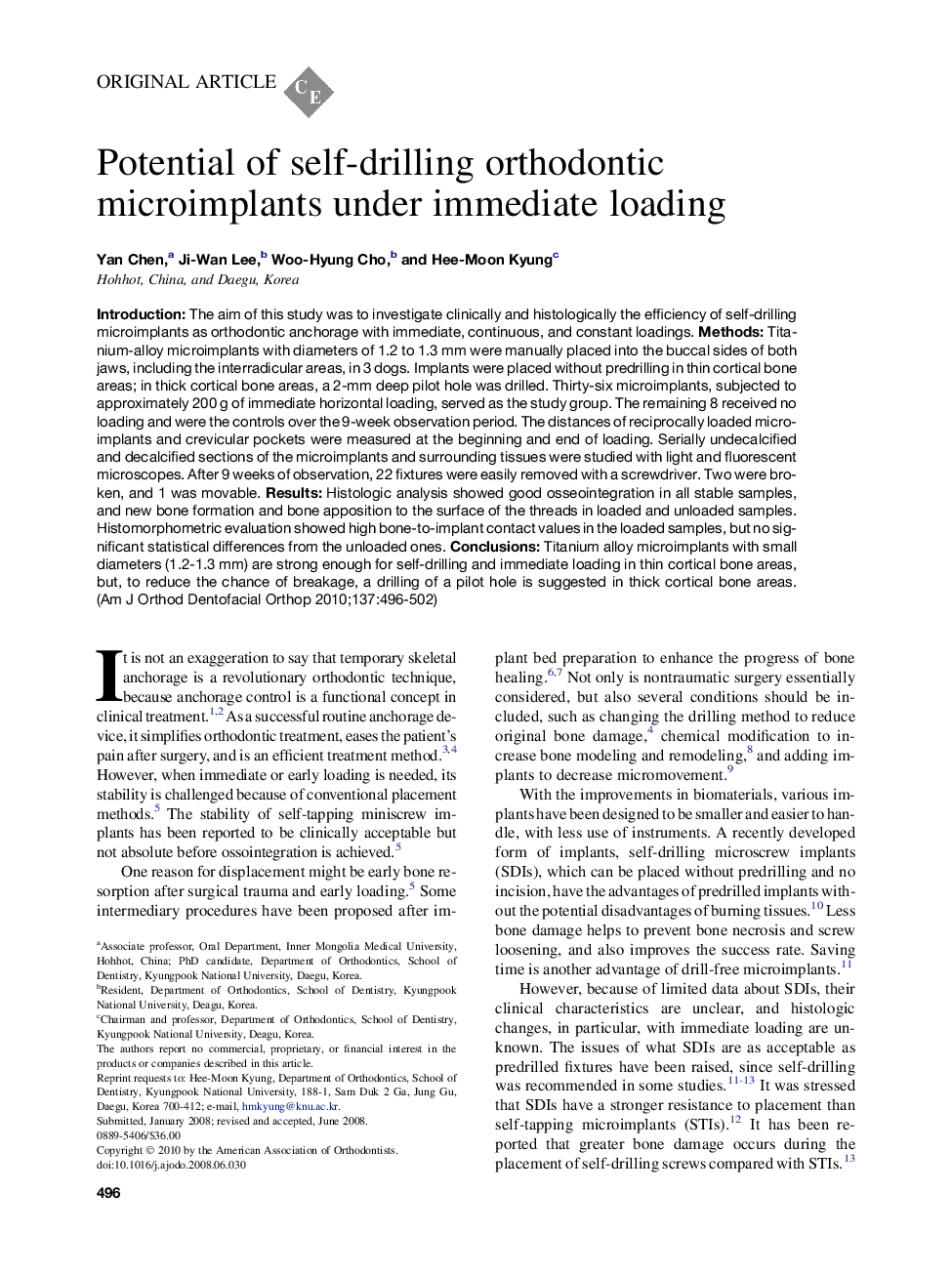| Article ID | Journal | Published Year | Pages | File Type |
|---|---|---|---|---|
| 3117656 | American Journal of Orthodontics and Dentofacial Orthopedics | 2010 | 7 Pages |
IntroductionThe aim of this study was to investigate clinically and histologically the efficiency of self-drilling microimplants as orthodontic anchorage with immediate, continuous, and constant loadings.MethodsTitanium-alloy microimplants with diameters of 1.2 to 1.3 mm were manually placed into the buccal sides of both jaws, including the interradicular areas, in 3 dogs. Implants were placed without predrilling in thin cortical bone areas; in thick cortical bone areas, a 2-mm deep pilot hole was drilled. Thirty-six microimplants, subjected to approximately 200 g of immediate horizontal loading, served as the study group. The remaining 8 received no loading and were the controls over the 9-week observation period. The distances of reciprocally loaded microimplants and crevicular pockets were measured at the beginning and end of loading. Serially undecalcified and decalcified sections of the microimplants and surrounding tissues were studied with light and fluorescent microscopes. After 9 weeks of observation, 22 fixtures were easily removed with a screwdriver. Two were broken, and 1 was movable.ResultsHistologic analysis showed good osseointegration in all stable samples, and new bone formation and bone apposition to the surface of the threads in loaded and unloaded samples. Histomorphometric evaluation showed high bone-to-implant contact values in the loaded samples, but no significant statistical differences from the unloaded ones.ConclusionsTitanium alloy microimplants with small diameters (1.2-1.3 mm) are strong enough for self-drilling and immediate loading in thin cortical bone areas, but, to reduce the chance of breakage, a drilling of a pilot hole is suggested in thick cortical bone areas.
